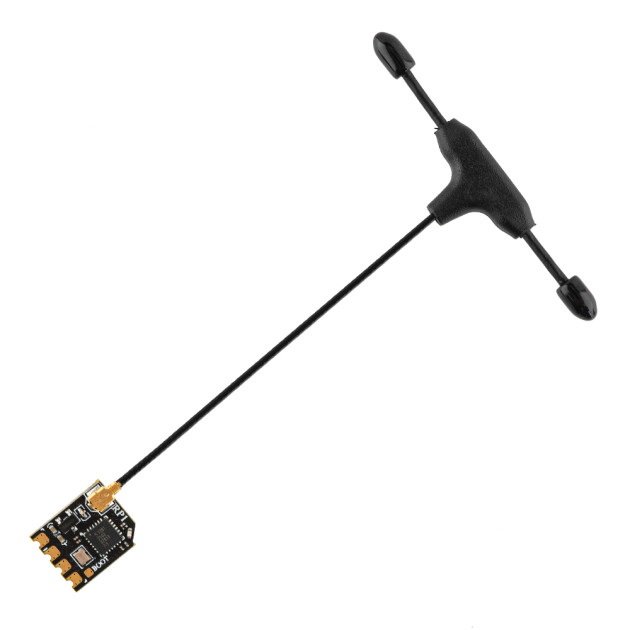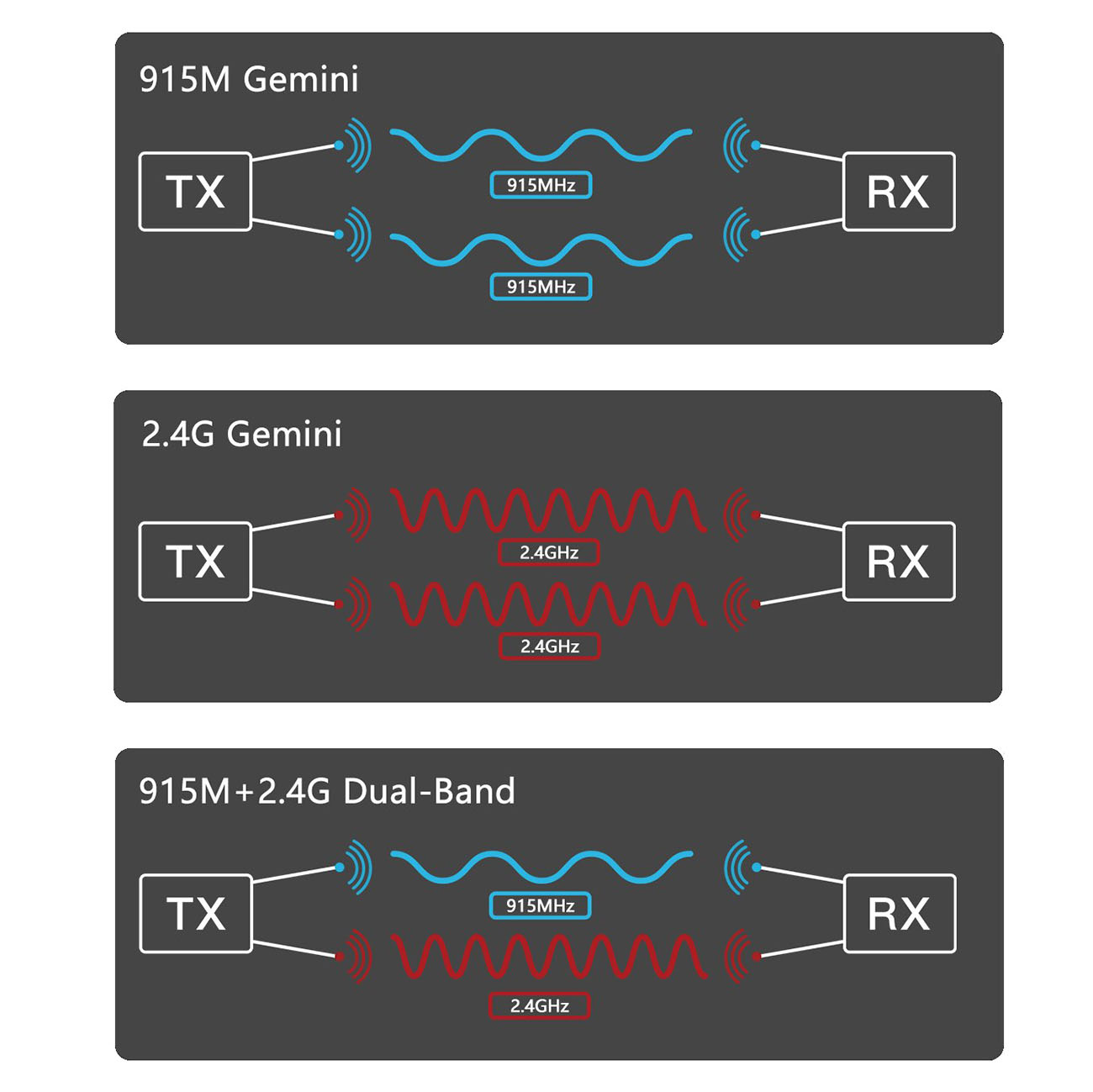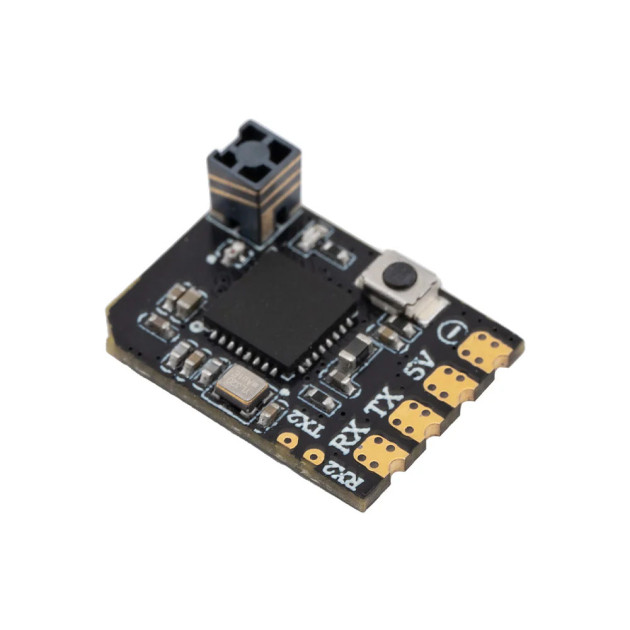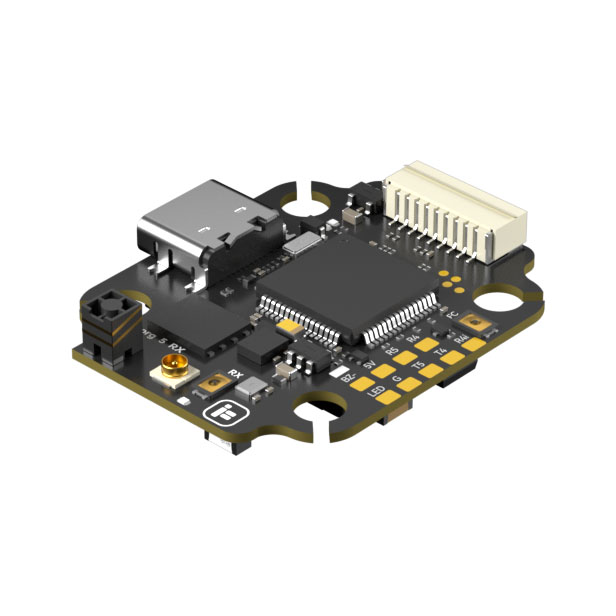RC receivers
The RC receiver is the device that takes commands from the radio transmitter and converts them into signals understood by the flight controller. Receivers differ by number of channels (e.g., 6, 8, 12, 16), by protocol and by frequency band. Each channel maps to one control on the transmitter — for example the four primary flight axes (throttle, roll, pitch, yaw) and additional channels for switches or special functions (e.g., arming, flight mode, GPS return, etc.).
According to the output signal type, receivers fall into several basic categories. The oldest is PWM (Pulse Width Modulation), where each channel has its own wire. It’s used mainly on fixed-wing models without a flight controller, where servos are driven directly from the receiver. PPM (Pulse Position Modulation) multiplexes all channels on a single signal wire, simplifying wiring, but channels are sent sequentially, which introduces a small delay.

Today, FPV builds use exclusively digital serial protocols that transmit all channels at once over a single wire. This gives very fast response and clean wiring. The most common are SBUS (FrSky, Futaba), iBUS (FlySky) and CRSF (used by Crossfire and ExpressLRS). Serial protocols provide not only low latency but also bidirectional communication — the receiver can send telemetry back to the radio (battery voltage, link quality, GPS position, etc.).

The state-of-the-art system is ExpressLRS (ELRS), an open-source project that has become the FPV standard. It offers low latency and long range. ELRS comes in two bands — 2.4 GHz (high refresh rate, great for freestyle and racing) and 868 MHz (EU) / 915 MHz (USA) (greater range for long-range).
ELRS receivers are available in several variants. Basic versions have a single antenna; more advanced models use diversity — two antennas where the receiver switches to the better signal. Even more advanced are True Diversity receivers, which use two full RF front-ends receiving simultaneously on both antennas for maximum link stability. For maximum reliability the ELRS link can run in Gemini mode, where the transmitter has two RF modules and communicates with a True Diversity receiver on two independent frequencies in the same band (2× 2.4 GHz / 2× 868 MHz). The most advanced is Xross (XCrossband), similar to Gemini but with one link on 2.4 GHz and the other on 868 MHz.

Some ELRS receivers use an on-board ceramic antenna instead of a wire antenna. This design is very compact but has shorter range. Integrated ceramic antennas are ideal for tiny builds like tinywhoops or racing drones, where they save space and weight and cannot be ripped off in crashes.

Some flight controllers for racing quads or AIO boards for whoops have an ELRS receiver integrated directly on the FC. Integrated receivers connect to the FC’s microcontroller via UART or SPI. With UART, the board carries a full receiver with the same features as an external one. SPI-connected receivers do not have their own firmware; the RX code is part of the FC firmware (e.g., Betaflight), so configuration options are more limited.

When choosing a receiver, always confirm it’s compatible with your radio and supports the same link protocol. Also consider the antenna type (wire vs. ceramic), connection method (UART, plug or solder pads), and whether it supports telemetry. A correctly selected and configured receiver is crucial for reliable and safe control of your FPV drone.
